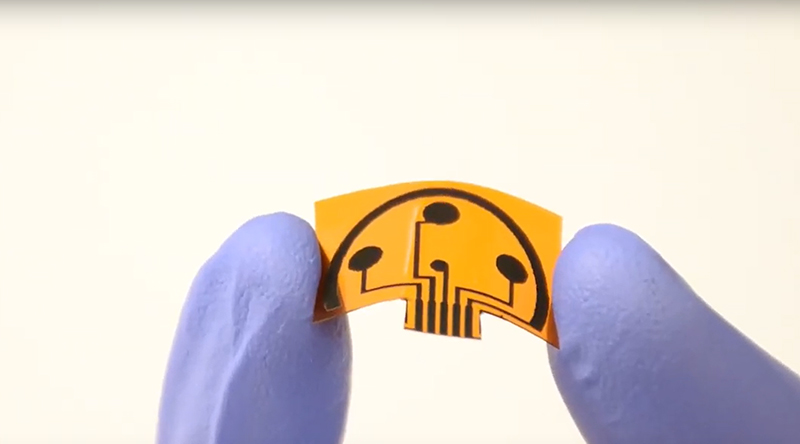Mental stress is difficult to measure. A hormone called cortisol, a steroid hormone, are closely linked to changes. There are blood tests available to measure cortisol, but a blood test can raise a person’s stress level itself and it can’t be done frequently, nor without a medical professional.
Read more Sweat Sensors to Predict Behavioral Issues in Autistic Children
Now, researchers at Caltech have developed a wireless sweat sensor that can accurately detect levels of cortisol. Wei Gao, an assistant professor of medical engineering at Caltech, and his colleagues presented their study in the journal Matter.
Gao’s new sensor was made using a similar approach as another sweat sensor he recently created that can measure the level of uric acid in the bloodstream, which is useful for monitoring conditions like cardiovascular disease, diabetes, or kidney disease, reports Caltech.
That sweat sensor, and the new one Gao and his team have created, are both made of graphene, a sheet-like form of carbon. A plastic sheet is etched with a laser to generate a 3D graphene structure with tiny pores in which sweat can be analyzed. Those pores create a large amount of surface area in the sensor, which makes it sensitive enough to detect compounds that are only present in very small amounts in sweat. In the new sensor, those tiny pores are coupled with an antibody, a type of immune system molecule, specifically sensitive to cortisol, thus allowing it to detect the compound.
The researchers tested their sweat sensor in two ways: In the first test, a person’s sweat was analyzed over a period of six days, and data representing cortisol levels were collected.

In the second test, changes in cortisol levels were recorded as they occurred in response to an acute stressor. This was done through two experiments. In the first, test subjects were asked to perform aerobic exercises, because intense exercise is known to cause a strong increase in cortisol. In the second experiment, test subjects were asked to submerge their hands in ice water, a stressor sufficient to elicit cortisol release. In both experiments, the sensors detected rising cortisol levels right away.
“Our analysis time could be only a few minutes,” Gao says. “Typically, a blood test takes at least one to two hours and requires a stress-inducing blood draw. For stress monitoring, time is very important.”
Though Gao’s sensor may find many uses in typical medical applications here on Earth, it is also being vetted for potential use in space. In October, NASA announced that Gao is one of six researchers selected to participate in studies of the health of humans on deep-space missions. Gao will receive funding to develop the sensor technology into a system for monitoring the stress and anxiety of astronauts as part of the program, which is being administered by the Translational Research Institute for Space Health (TRISH).
Read more This Wearable Patch Detects Stress Hormone in Sweat
“We aim to develop a wearable system that can collect multimodal data, including both vital sign and molecular biomarker information, to obtain the accurate classification for deep space stress and anxiety,” Gao says.












